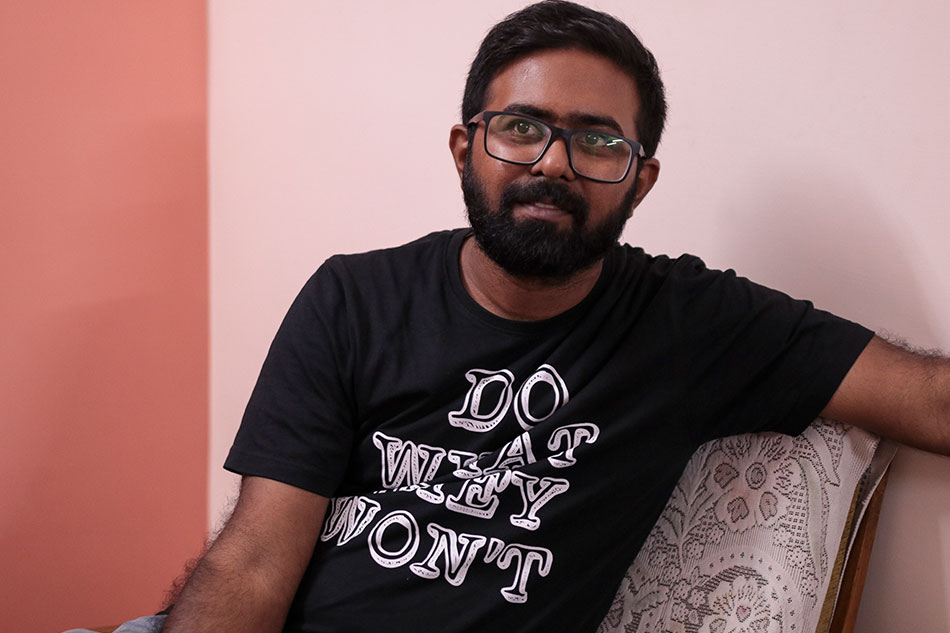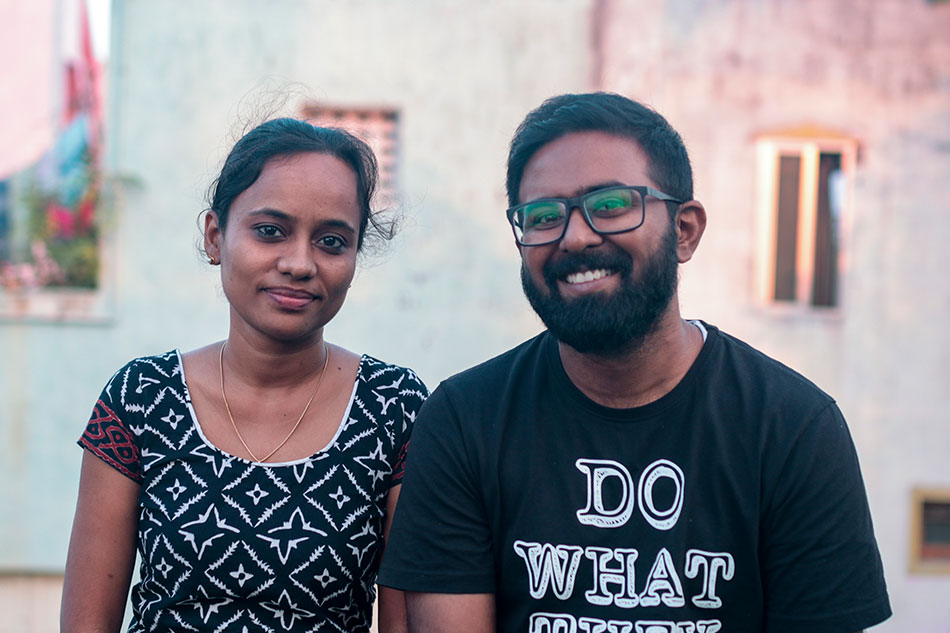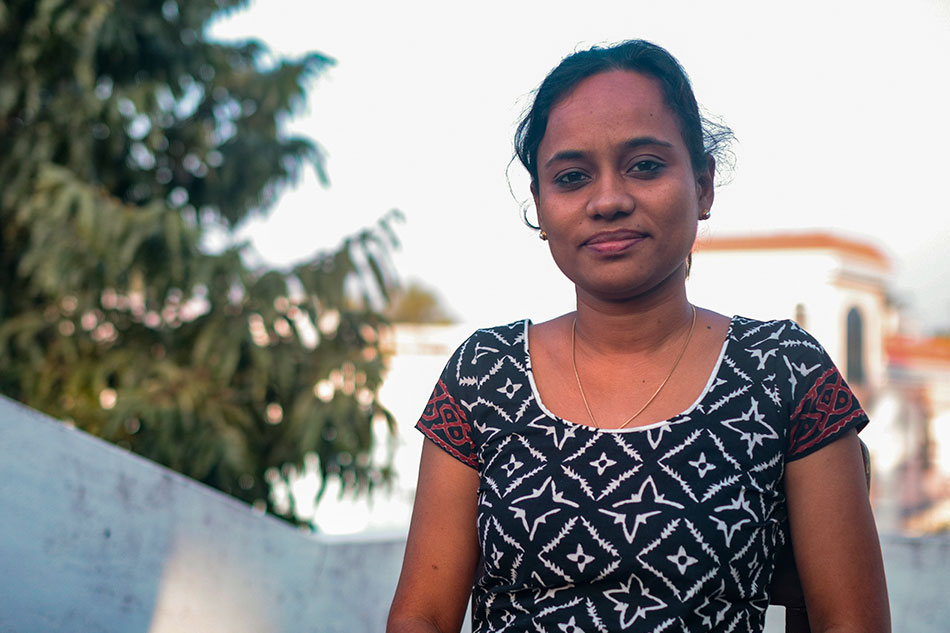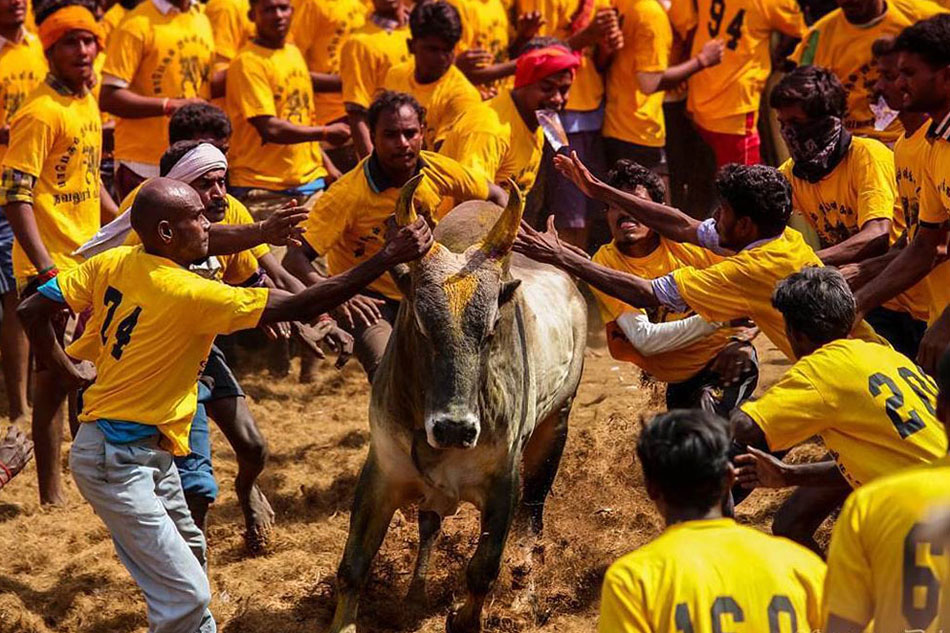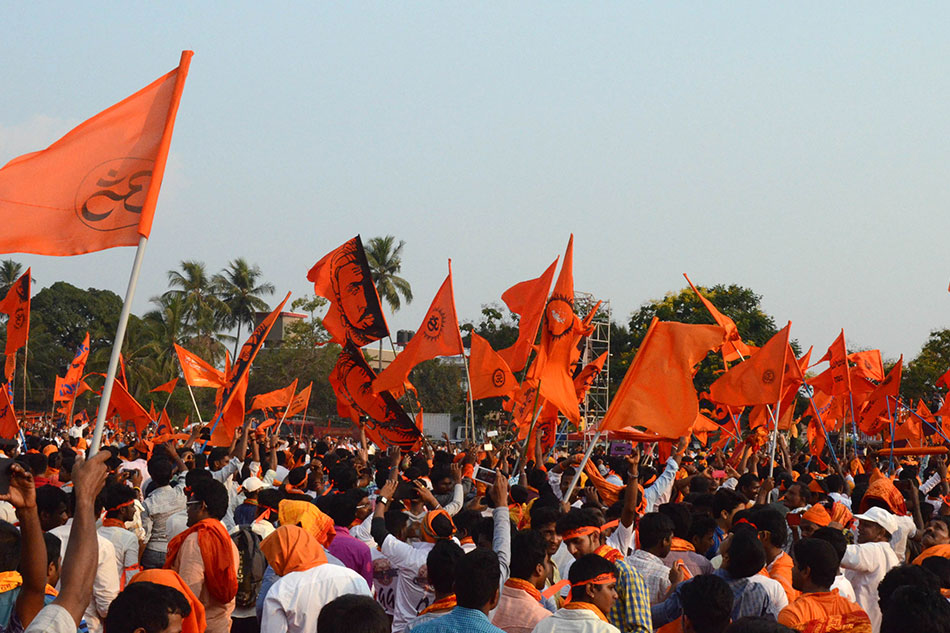Caste and Tamil nationalism in the Indian election | ABS-CBN
ADVERTISEMENT

Welcome, Kapamilya! We use cookies to improve your browsing experience. Continuing to use this site means you agree to our use of cookies. Tell me more!
Caste and Tamil nationalism in the Indian election
Caste and Tamil nationalism in the Indian election
Karim Raslan
Published Feb 16, 2019 05:54 PM PHT
|
Updated Feb 16, 2019 05:55 PM PHT
Jabaraj Selvaraj is Tamil. Unusually for a resident of the predominantly Hindu state of Tamil Nadu, he is also a Christian and deeply critical of caste. The 38-year-old social worker is an unassuming man – sufficiently comfortable in his own skin to allow others – in this case his wife, Semmalar, an academic and a Dalit (previously known as “Untouchable”, though this term is now considered inappropriate) – to speak first.
Jabaraj Selvaraj is Tamil. Unusually for a resident of the predominantly Hindu state of Tamil Nadu, he is also a Christian and deeply critical of caste. The 38-year-old social worker is an unassuming man – sufficiently comfortable in his own skin to allow others – in this case his wife, Semmalar, an academic and a Dalit (previously known as “Untouchable”, though this term is now considered inappropriate) – to speak first.
They’re a young, attractive pair, especially when they both clamber onto his impressive-looking 350cc Royal Enfield Thunderbird motorbike.
They’re a young, attractive pair, especially when they both clamber onto his impressive-looking 350cc Royal Enfield Thunderbird motorbike.
They’re also a mixed-caste couple.
They’re also a mixed-caste couple.
Winning his parents over to the match wasn’t easy. As Jabaraj explains, “Your caste origins follow you even when you convert. My own caste, the Nadar, were known for their anti-Dalit violence and my father, well, he was concerned about what his relatives would think: the pressures of what society is going to say. But urban life is different from the villages.”
Winning his parents over to the match wasn’t easy. As Jabaraj explains, “Your caste origins follow you even when you convert. My own caste, the Nadar, were known for their anti-Dalit violence and my father, well, he was concerned about what his relatives would think: the pressures of what society is going to say. But urban life is different from the villages.”
ADVERTISEMENT
Along with their 10-year-old son, the couple lives in a 3-storey joint-family home in the bustling Chennai suburb of Tambaram. It’s a lively place. His married sisters live nearby and the house hums with activity: there are visitors all day long and into the early evening.
Along with their 10-year-old son, the couple lives in a 3-storey joint-family home in the bustling Chennai suburb of Tambaram. It’s a lively place. His married sisters live nearby and the house hums with activity: there are visitors all day long and into the early evening.
Jabaraj hadn’t always wanted to be a social worker.
Jabaraj hadn’t always wanted to be a social worker.
“I was a nerd. When others were out playing, I’d be on my computer. I just wanted to do statistics and computing. I never really had any other interests. However, I failed in my last semester at college.”
“I was a nerd. When others were out playing, I’d be on my computer. I just wanted to do statistics and computing. I never really had any other interests. However, I failed in my last semester at college.”
“Before that, I’d believed in everything I’d learnt at school and college. I went to an RSS (the right-wing Hindu nationalist association that nurtured the BJP) school. The principal was a friend of my father’s. They’d teach us Hindu patriotic and devotional songs. I was also taught that I was an ‘Hindu’ Christian.
“Before that, I’d believed in everything I’d learnt at school and college. I went to an RSS (the right-wing Hindu nationalist association that nurtured the BJP) school. The principal was a friend of my father’s. They’d teach us Hindu patriotic and devotional songs. I was also taught that I was an ‘Hindu’ Christian.
“Nothing made me doubt the world around me. But as it happened, I went to a camp with liberal religious views around the time I failed at college and that’s when I became a lot more aware of politics in India. I started experiencing things differently.”
“Nothing made me doubt the world around me. But as it happened, I went to a camp with liberal religious views around the time I failed at college and that’s when I became a lot more aware of politics in India. I started experiencing things differently.”
ADVERTISEMENT
Not long after, as Jabaraj explored the world of social work, he met his future wife, Semmalar.
Not long after, as Jabaraj explored the world of social work, he met his future wife, Semmalar.
“I had all these ideas. We were at a rural school, helping the kids. Semmalar was my partner in the field work. She was from a family where her father was an atheist. He was a union member in a high position. Semmalar and I talked about issues, about politics. She wanted to do psychology and help people. We built our relationship from there.”
“I had all these ideas. We were at a rural school, helping the kids. Semmalar was my partner in the field work. She was from a family where her father was an atheist. He was a union member in a high position. Semmalar and I talked about issues, about politics. She wanted to do psychology and help people. We built our relationship from there.”
Jabaraj’s calm, understated manner masks some firmly-held views. When asked if he was Indian first or Tamil first, he’s clear: “I’m Tamil first. Otherwise, I don’t believe much in borders.”
Jabaraj’s calm, understated manner masks some firmly-held views. When asked if he was Indian first or Tamil first, he’s clear: “I’m Tamil first. Otherwise, I don’t believe much in borders.”
Southern India – the Dravidian heartland of Tamil Nadu, Kerala, Karnataka, Telangana and Andhra Pradesh – has long been known for its more progressive ethos. In cultural terms, the South is also different. The Tamil language is far older than Hindi. Its written tradition stretches back thousands of years. The 3rd Century BCE poet Thiruvalluvar with his expansive moral philosophy enshrined in the Thirukkural remains mandatory reading for young Tamilians.
Southern India – the Dravidian heartland of Tamil Nadu, Kerala, Karnataka, Telangana and Andhra Pradesh – has long been known for its more progressive ethos. In cultural terms, the South is also different. The Tamil language is far older than Hindi. Its written tradition stretches back thousands of years. The 3rd Century BCE poet Thiruvalluvar with his expansive moral philosophy enshrined in the Thirukkural remains mandatory reading for young Tamilians.
Indeed, Southern Indians are generally far better educated, healthier and richer than their counterparts in the north. Uttar Pradesh—India’s largest state in the north—has a Human Development Index (or HDI) of 0.583, comparable to Cambodia. In contrast, Tamil Nadu’s HDI floats around 0.708 and neighbouring Kerala records an HDI of 0.784, just shy of Malaysia according to the UNDP Human Development Report 2018 and the Indian Sub-national HDI Area Database of the Global Data Lab.
Indeed, Southern Indians are generally far better educated, healthier and richer than their counterparts in the north. Uttar Pradesh—India’s largest state in the north—has a Human Development Index (or HDI) of 0.583, comparable to Cambodia. In contrast, Tamil Nadu’s HDI floats around 0.708 and neighbouring Kerala records an HDI of 0.784, just shy of Malaysia according to the UNDP Human Development Report 2018 and the Indian Sub-national HDI Area Database of the Global Data Lab.
ADVERTISEMENT
The social progressiveness has a positive impact on the state’s economic life. With a population of nearly 80 million, Tamil Nadu is an economic powerhouse with growth rates (12.3%) considerably higher than national levels (7.2%). Indeed, it’s GDP (USD256 billion) is just second after the Mumbai-centric state of Maharashtra. Certainly, Tamil Nadu is a magnet for foreign investment, emerging for example as India’s automotive manufacturing hub, with just over 30% of the republic’s overall capacity.
The social progressiveness has a positive impact on the state’s economic life. With a population of nearly 80 million, Tamil Nadu is an economic powerhouse with growth rates (12.3%) considerably higher than national levels (7.2%). Indeed, it’s GDP (USD256 billion) is just second after the Mumbai-centric state of Maharashtra. Certainly, Tamil Nadu is a magnet for foreign investment, emerging for example as India’s automotive manufacturing hub, with just over 30% of the republic’s overall capacity.
But Jabaraj remains critical of the way in which Tamil identity is refracted through an upper-caste lens: “When people visualise Tamil culture, they tend to think of silk shirts, silk saris and silk veshtis (lunghis). But how accessible are any of these to the poor and how much of Dalit Tamil culture is included in this picture? All that they are showing is dominant caste identity as Tamil culture. Other than language, we don’t have anything at all.”
But Jabaraj remains critical of the way in which Tamil identity is refracted through an upper-caste lens: “When people visualise Tamil culture, they tend to think of silk shirts, silk saris and silk veshtis (lunghis). But how accessible are any of these to the poor and how much of Dalit Tamil culture is included in this picture? All that they are showing is dominant caste identity as Tamil culture. Other than language, we don’t have anything at all.”
He is similarly sceptical of the way that the Jallikattu controversy (Jallikattu is a bull “taming” sport unique to Tamil Nadu) was manipulated by activists back in 2017. Banned by the Supreme Court, the ensuing protests became a lightning-rod for anti-Delhi/anti-Modi anger. However, for Jabaraj, Jallikattu is very much an upper caste tradition and one that expressly excludes Dalit participation.
He is similarly sceptical of the way that the Jallikattu controversy (Jallikattu is a bull “taming” sport unique to Tamil Nadu) was manipulated by activists back in 2017. Banned by the Supreme Court, the ensuing protests became a lightning-rod for anti-Delhi/anti-Modi anger. However, for Jabaraj, Jallikattu is very much an upper caste tradition and one that expressly excludes Dalit participation.
With elections approaching, Jabaraj is concerned about attempts to polarise the population along caste lines. “Narendra Modi and the BJP are brilliant at social media. They propagate lies as though they’re the truth. Thankfully, the cynical manipulation doesn’t work as well in the cities. But social media is pushing in the name of culture. It’s all becoming more fanatic.”
With elections approaching, Jabaraj is concerned about attempts to polarise the population along caste lines. “Narendra Modi and the BJP are brilliant at social media. They propagate lies as though they’re the truth. Thankfully, the cynical manipulation doesn’t work as well in the cities. But social media is pushing in the name of culture. It’s all becoming more fanatic.”
Still, the state’s more open and independent ethos – perhaps building on the discursive and humanist themes embodied in the Thirukkural – has provided an important ballast to the strident Hindu revivalism that swept the BJP to power back in 2014. There appears to be little evidence that in 2019 anything will be different.
Tamil Nadu will continue to plough its prosperous and progressive furrow whatever happens in Delhi.
Still, the state’s more open and independent ethos – perhaps building on the discursive and humanist themes embodied in the Thirukkural – has provided an important ballast to the strident Hindu revivalism that swept the BJP to power back in 2014. There appears to be little evidence that in 2019 anything will be different.
Tamil Nadu will continue to plough its prosperous and progressive furrow whatever happens in Delhi.
Read More:
blog roll
india elections
karim raslan
certialah asean
south asia
tamil
caste system
democracy
religion
ADVERTISEMENT
ADVERTISEMENT



